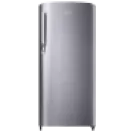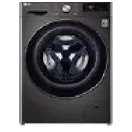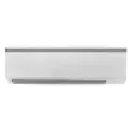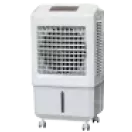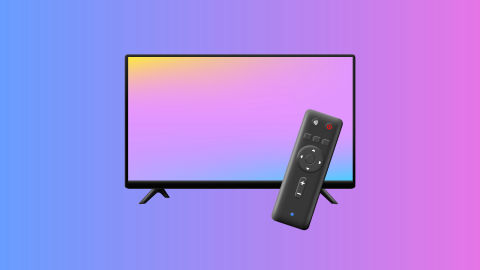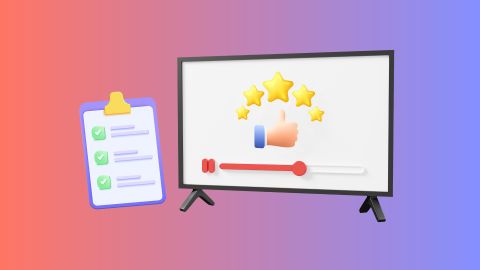3 min
11-March-2025
After months of inactivity during winter, your air conditioner may not start as expected. This can happen due to various reasons, such as dust buildup, electrical faults, or refrigerant leaks. Many ACs require basic maintenance before they can function efficiently again. If your AC is not turning on, checking simple issues can save you from unnecessary expenses.
Common reasons why ACs will not start after winter
After a long period of inactivity, several factors can prevent your AC from starting. Identifying these issues early can save time and money.
- Tripped circuit breaker: ACs consume a significant amount of power. A circuit breaker may trip due to voltage fluctuations. Resetting the breaker and ensuring a steady power supply can resolve this.
- Clogged air filters: Dust and dirt accumulate in filters over time, restricting airflow. Cleaning or replacing the filters ensures better cooling efficiency and prevents strain on the system.
- Low refrigerant levels: Over time, refrigerant can leak, leading to reduced cooling capacity. If your AC is not cooling effectively, a professional refill may be required.
- Damaged wiring: Wires can deteriorate due to pests or moisture. Inspecting and replacing damaged wiring can restore functionality.
- Frozen evaporator coils: If coils freeze due to dirt buildup, your AC may not work. Thawing and cleaning the coils can prevent blockages and improve performance.
How to prepare your AC for summer after long inactivityGetting your AC ready before peak summer can improve its efficiency and longevity.
- Clean or replace filters: Dirty filters can cause overheating and poor airflow. Regular cleaning improves cooling and energy efficiency.
- Inspect outdoor units: Leaves, dirt, and debris can clog the outdoor unit. Cleaning it ensures proper ventilation and prevents overheating.
- Check refrigerant levels: Low refrigerant can affect cooling. A professional check-up can help detect leaks and refill as needed.
- Test the thermostat: Ensure that your thermostat is calibrated correctly for accurate temperature control. Replace batteries if necessary.
- Run a trial test: Switching on the AC for a short period helps detect early issues before peak summer.
Quick DIY fixes for a non-starting ACIf your AC refuses to turn on, try these quick solutions before calling a technician.
- Reset the circuit breaker: If your AC is not getting power, resetting the breaker can restore operation.
- Inspect the thermostat settings: Incorrect settings can prevent cooling. Ensure it is set to ‘cool’ mode at an appropriate temperature.
- Check for loose wires: Loose or disconnected ends can disrupt power flow. Securing connections may fix the issue.
- Clean the air filters: Clogged filters can block airflow, leading to malfunctions. Regular cleaning enhances efficiency.
- Inspect the drainage system: A blocked drain line can cause water buildup, triggering safety shutdowns. Clearing blockages can prevent system failure.
When to call a technician for AC start-up issues
If your AC still does not work after basic troubleshooting, professional help may be needed.- Persistent power failures: If resetting the circuit breaker does not help, an expert should inspect the wiring.
- Refrigerant leaks: If your AC fails to cool even with a working compressor, a technician can check and refill the refrigerant.
- Strange noises: Unusual sounds indicate issues with the fan, motor, or compressor. Early repairs prevent major damage.
- Weak airflow: If airflow remains poor even after filter cleaning, deeper system issues may be the cause.
- Frequent shutdowns: If your AC turns off repeatedly, internal components may need servicing or replacement.
If the issues persist, it might be time for you to invest in a new AC.
You visit one of our partner stores, pick the air conditioner of your choice, and convert its cost into Easy EMIs. With a flexible repayment tenure of up to 60 months. This financing solution from Bajaj Finserv is available on 1 million products.
Flexible financing options with Bajaj Finserv
On Bajaj Mall, you may examine a variety of ACs, evaluate characteristics, and choose the model that best suits your requirements. Bajaj Finserv offers flexible financing options to facilitate the purchase of AC. You may break up the cost into manageable monthly installments by choosing the Easy EMI option. Once you have made your choice, pay conveniently using Bajaj Finserv’s financing options. Enjoy flexible repayment tenures and manage your budget effortlessly with Easy EMI plans.Benefits of shopping with Bajaj Finserv
- Competitive pricing: Get top-quality air conditioners at budget-friendly prices, ensuring excellent value for your investment.
- Flexible EMI plans: Spread the cost of your AC with Easy EMI options, making your purchase more manageable.
- Zero down payment: Own an AC without an upfront payment on select models, making it more accessible.
- Extensive range: Browse a wide variety of top brands and models available across multiple partner stores.
- Free home delivery: Enjoy a seamless shopping experience with complimentary delivery on select models.
Air conditioners
ACs by capacity
Budget
Star rating
AC comparison
AC buying guide
Bajaj Finserv App for all your financial needs and goals
Trusted by 50 million+ customers in India, Bajaj Finserv App is a one-stop solution for all your financial needs and goals.
You can use the Bajaj Finserv App to:
Apply for loans online, such as Instant Personal Loan, Home Loan, Business Loan, Gold Loan, and more.
You can use the Bajaj Finserv App to:
Apply for loans online, such as Instant Personal Loan, Home Loan, Business Loan, Gold Loan, and more.
- Explore and apply for co-branded credit cards online.
- Invest in fixed deposits and mutual funds on the app.
- Choose from multiple insurance for your health, motor and even pocket insurance, from various insurance providers.
- Pay and manage your bills and recharges using the BBPS platform. Use Bajaj Pay and Bajaj Wallet for quick and simple money transfers and transactions.
- Apply for Insta EMI Card and get a pre-approved limit on the app. Explore over 1 million products on the app that can be purchased from a partner store on Easy EMIs.
- Shop from over 100+ brand partners that offer a diverse range of products and services.
- Use specialised tools like EMI calculators, SIP Calculators
- Check your credit score, download loan statements, and even get quick customer support—all on the app.
Frequently asked questions
Why will not my AC start after winter?
Your AC may not start after winter due to various issues, such as tripped circuit breakers, clogged air filters, low refrigerant levels, or faulty wiring. Extended inactivity can also lead to dust accumulation, affecting internal components. Additionally, rodents or pests might have damaged wiring. Checking these issues and ensuring proper maintenance can help restore its functionality. If problems persist, professional servicing may be required.
How do I prepare my AC for summer after long storage?
Before restarting your AC after months of inactivity, clean the air filters to remove dust and debris. Inspect the outdoor unit for obstructions like leaves or dirt. Check refrigerant levels to ensure efficient cooling. Test the thermostat for accuracy and proper functioning. Run a trial to detect unusual noises or airflow issues, allowing you to address minor problems before peak summer usage.
Does dust build-up affect AC performance after winter?
Yes, accumulated dust can significantly impact your AC’s performance. Clogged filters restrict airflow, reducing efficiency and increasing energy consumption. Dust buildup on coils can hinder heat exchange, leading to insufficient cooling. It can also cause overheating, which may damage internal components. Regular cleaning and maintenance are essential to prevent breakdowns and ensure smooth operation.
What maintenance steps should I follow before restarting my AC?
To ensure optimal performance, start by checking the power supply and circuit breakers. Clean or replace air filters to improve airflow. Inspect wiring for any signs of damage or loose connections. Test the thermostat to ensure it is functioning correctly and set at the right temperature. Finally, check the drainage system for blockages to prevent water leakage and potential damage. Running a test cycle can help identify any issues before heavy summer use.
Show More
Show Less

